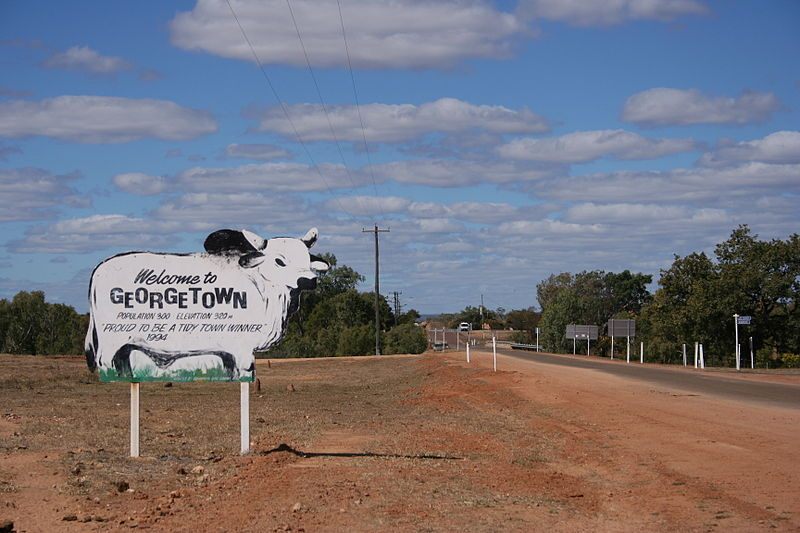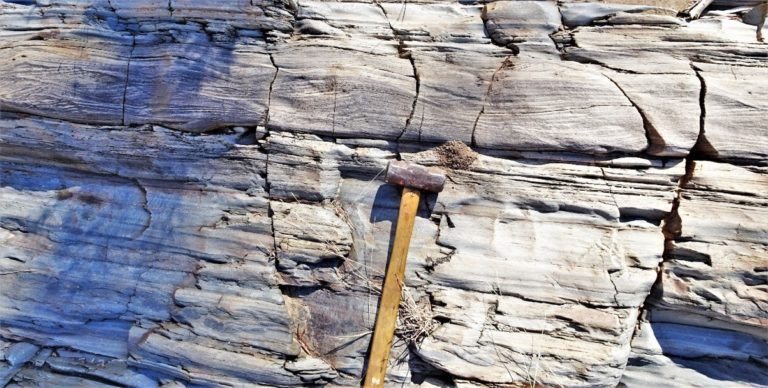Northern Australia Was Once Smushed Up Against North America
And other strange facts of supercontinent history.

Recently, a group of scientists released a paper in the journal Geology in which the researchers showed, with a great pile of evidence, that part of Australia (a northern bit) once was part of Canada. This, according to their research, would have been true 1.7 billion years ago. To humans living on Earth today, this is a fun and surprising fact, because in our time, Canada and Australia are about as far from each other as two pieces of land can be. In a standard world map, they’re in opposite corners from each other, Canada in the top left, Australia at the bottom right, and even if one were to reorient this view, they would still have the whole of the Pacific Ocean between them.
But the evidence is very strong that the area around Georgetown, Australia, which is located in the northern bit of the northeastern state of Queensland, was once smashed up next to North America (also known as Laurentia, to earth scientists studying supercontinents). The sedimentary layers of rock found in that area bear a strong resemblance to parallel formations in Canada, and measures of paleomagnetism, which show the past workings of the Earth’s magnetic field, back up that connection.
The researchers behind this work, led by Curtin University in Perth, Australia, started examining the deep history of Georgetown a couple years back as part of a larger project trying to understand the creation of the supercontinent Nuna, which formed approximately 1.6 billion years ago. In the picture that earth scientists have been able to piece together of Earth’s early history, Nuna is the oldest known supercontinent—it may be the first true supercontinent on Earth.

Not so long ago—about four decades past, a miniscule increment in the history of Earth—the only supercontinent scientists had conceived of was Pangea, which formed 335 million years ago and began to break apart 160 million years after that. But in the 1980s, earth scientists started to think about what the world pre-Pangea would have looked like, and in the early 1990s, they had created models of Rodinia, a supercontinent that formed 1.3 to 0.9 billion years ago. Scientists are still puzzling out the exact organization of land in the time of Rodinia—those first models were called into question by later work in the early 2000s, and, as David A. D. Evans, of Yale University, wrote in a 2013 review paper, “paleomagnetism struck next,” uncovering new data that pushed scientists to re-evaluate earlier ideas.
All the while, there was a lurking suspicion that perhaps Earth had yet another supercontinent in its history, one that pre-dated Rodinia, and more recently scientists have been working to reconstruct the history of that supercontinent, now usually called Nuna. (Other proposed names for the continent have included: Hudsonland, Columbia, Capricornia, and Midgardia.) They have discovered that Nuna formed more recently than once believed—1.6 billion years ago instead of 1.8 billion years ago.
The study of Georgetown is one piece of a larger puzzle. “Even though the investigated region is relatively small, the implications are broad-reaching,” says Evans, who collaborates with the Curtin researchers but was not an author on this particular study. “If one can identify even a tiny fragment of one ancient continent embedded within another, then that connection speaks to an original continuity between the larger landmasses”—a phenomenon, Evans says, that Ian Dalziel, a geologist at the University of Texas at Austin, calls a “tectonic business card.”
“If you look in the pocketbook of a person after a party and find someone else’s business card, that’s tangible evidence of their meeting—even though the card itself is a trivial amount of material,” explains Evans. “The rocks recently described in the Georgetown Inlier of northeastern Australia are so distinctive to North American geology, according to the authors, that it’s as if it was like a business card with ‘North America’ written on it.”

In the world of Nuna, the connection between Australia and North America is looking strong at the moment. But there are other fun juxtapostions of place in this ancient arrangement of the world. “For example, we published results that allowed us to have the southeast coastal zone of China connected with southwestern Laurentia—the U.S.—at least since around Nuna time,” says Zheng-Xiang Li, one of the co-authors of the new paper. “And that continental piece then stuck with another small craton from present-day South China during the assembly of the younger supercontinent Rodinia, sitting between Australia and the U.S.”
When you think about the task these scientists are attempting, it can be a little bit mind-boggling. For hundreds of millions of years, cratons—the most stable pieces of continental crust—have been moving around the planet, ending up in different configurations that can make the same watery sphere seem strange and new, like the same furniture rearranged differently in a room. These ancient movements, says Li, are “relevant to everything that surrounds us today, from the continental history, discovery of mineral and energy resources, life evolution, to environmental and climatic changes.” Using clues left behind all that time ago, in rocks that are still around today, we can understand how different our world was far back into the distant past.
























Follow us on Twitter to get the latest on the world's hidden wonders.
Like us on Facebook to get the latest on the world's hidden wonders.
Follow us on Twitter Like us on Facebook